QuestionI am very interested in this whole BARF food plan. What are your feelings? I have two 100 pound labs. Can I feed them raw chicken thighs? Very leery, as spent 3000$ for operation on dog who had intestinal block. I understand raw bones are safe! Still very nervous. HELP!
k
AnswerForget it. It is difficult and time consuming to do right. Mistakes can harm not only your dog, but you and your family. There is a simple, economic diet that anybody can make work.
Suppose you knew a breeder that bred hundreds of dogs a year, mostly Labs, Shepherds, and Goldens. They provided all the medical care for most of them the first year. At the end of it, they did a complete physical including hip X-rays on all of them. They then spent $35,000 training them before giving them away. They have a large data base of breeding records. Dogs with any physical or temperamental problems are unfit for the program and are a waste. Their well equipped clinic and staff are available for serious problems as long as the dog is working. When the dog is no longer able to work, it is replaced at again the $35,000 plus a large emotional upheaval for the person depending on the dog. They have experimented with different diets and exchanged data with other such breeders. Don't you think that what ever they are feeding is healthy and safe? What kinds of controlled studies do you have backing the BARF diet? How objective are the sources of your information? Is your dog's health, their top priority?
I have been raising puppies since 1991 for a large dog guide school that does exactly that. What do they feed? They instruct us to feed Pro Plan chicken and rice puppy chow until 4 months and then switch to adult Pro Plan chicken and rice. I know enough of the people with the trained dogs to know they continue the Pro Plan. The group I meet with monthly for training includes people that have raised puppies for 6 different service dog schools. Some of them are feeding other premium commercial chows including Iams and Eukanuba. Any dog owner wanting a healthy, long lived dog can make this regimen work, leaving more time to spend on the dog. It is also relatively economical.
The BARF diet is built on many fallacies, starting with the idea the chicken from the supermarket is similar to natural prey. Not so. At the processing plant, all the nutritious insides including the organ meats are removed. They are sold to the commercial dog food producers. Have you ever seen a predator eat a kill? What do they eat first? Right, all those nasty byproducts that go into the commercial dog food.
The AVMA condemns the BARF diet. And they are not concerned about contaminating you and your families food handling all that raw meat in your house. If you do go with it, practice good sanitation. For more on the fallacies of the Barf diet, see http://www.secondchanceranch.org/rawmeat.html
I am a little concerned about their weight. Most Labs shouldn't weigh 100 pounds. Your dog definitely should be narrower at the waist than the hips and chest. You should be able to easily feel the ribs, but not see them. Each dog is different. Standard recommendations are a good place to start, but each dog
must have its food adjusted to its individual needs. How much they eat is a bigger threat than what most Labs are eating.

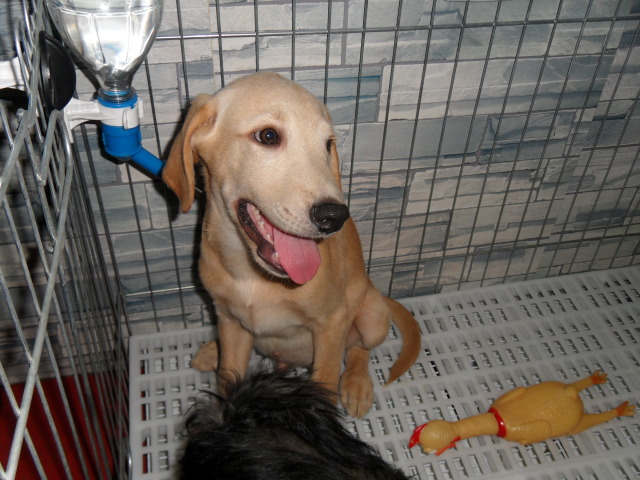 Is my dog a pure-bred lab?
Question
Sort of top view
Hi. I recently received
Is my dog a pure-bred lab?
Question
Sort of top view
Hi. I recently received
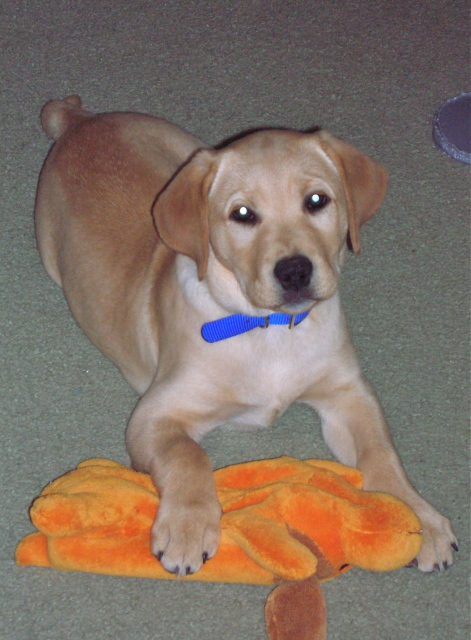 constant puppy barking
Question
My 13 week old female yellow lab barks consta
constant puppy barking
Question
My 13 week old female yellow lab barks consta
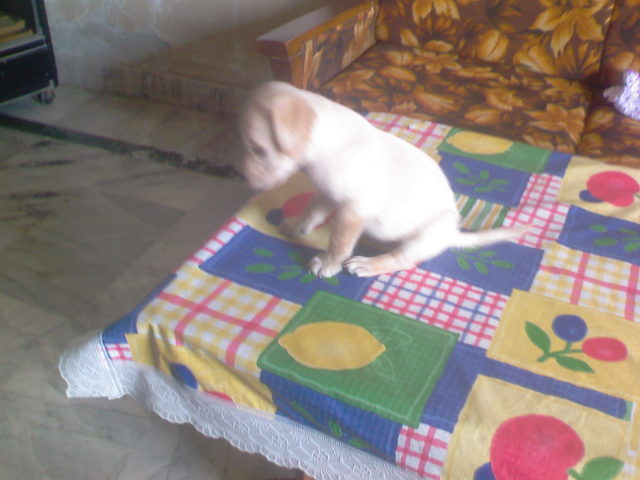 about my female dogs height
Question
sitting on table
i got a fawn coloured female
about my female dogs height
Question
sitting on table
i got a fawn coloured female
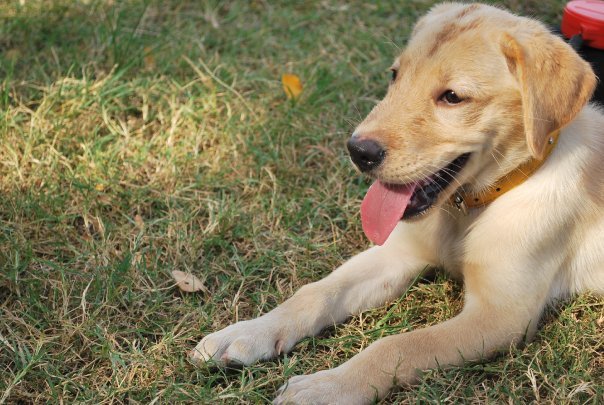 vitamins for my yellow lab
Questionbruno
QUESTION: what is the best vitamin
vitamins for my yellow lab
Questionbruno
QUESTION: what is the best vitamin
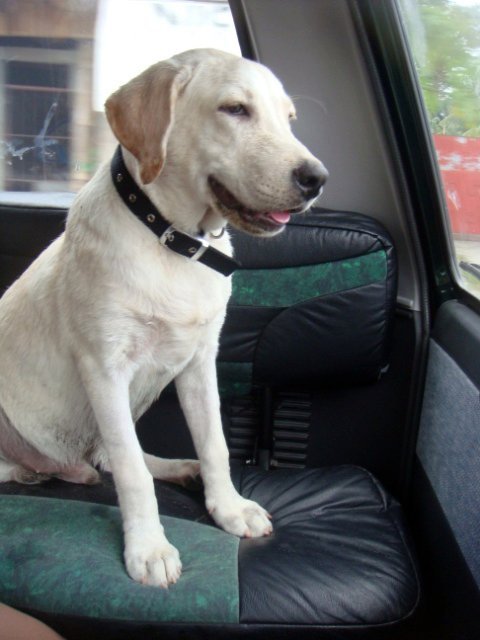 Dog breed
Question
Puto.
We have crossed bred dogs in the house a
Dog breed
Question
Puto.
We have crossed bred dogs in the house a